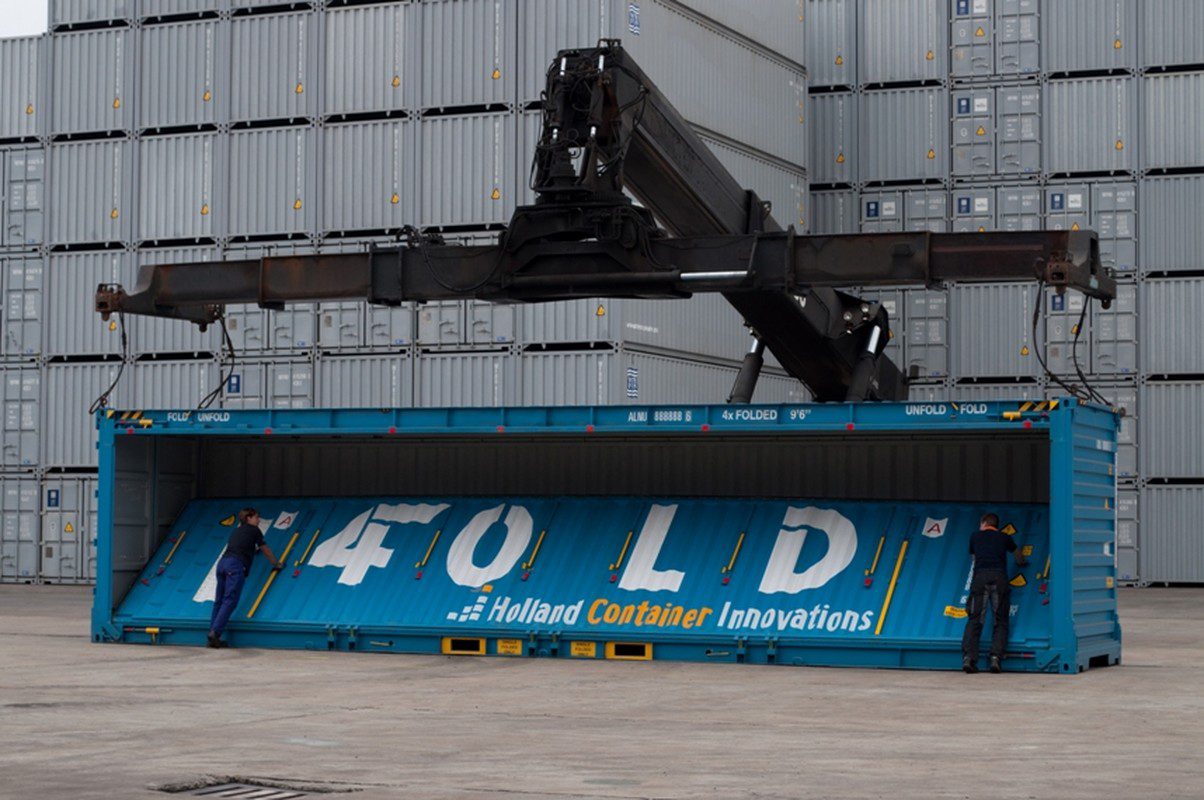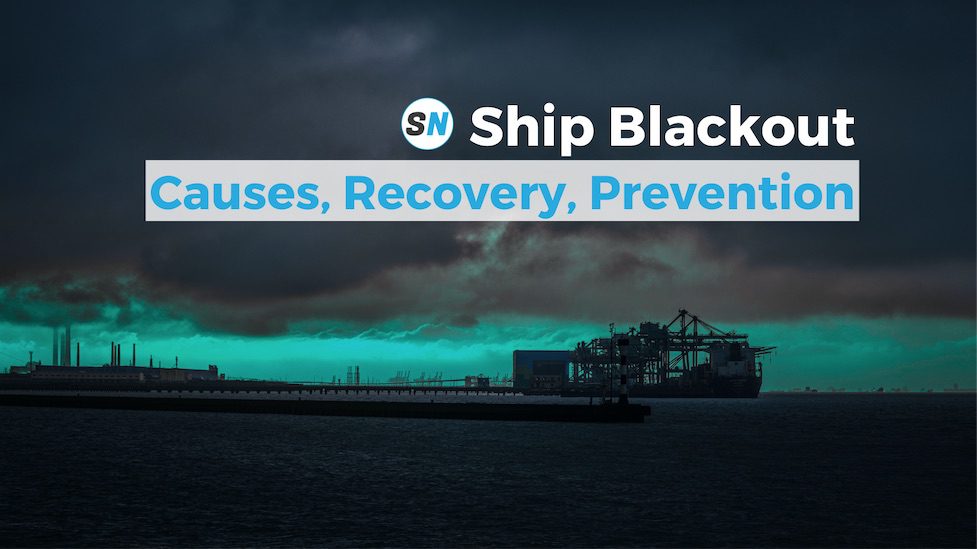28 November 2024
Folding Containers – Time to Shine

Standardized containers clog up ports, rail yards and warehouses both empty and full of goods. Hence, the stars are aligning for a solution that was holding back before the pandemic. Folding Containers, in an accordion or collapsible style, to as much as 1/5 their usual size. At least, that’s what their backers are hoping.
The Need
Drewry estimates that almost 27% of the 862 million crates (TEU) that pass through the world’s ports this year will be empty. Boston Consulting Group has calculated the cost of transporting them to places for loading at about $20 billion. Numerous units will spend days or even weeks taking up space in already-jammed holding areas and depots. Thus, compounding delays along supply chains.
Note that from 2010 through 2017, empties through Long Beach increased 40.6%, while loaded TEU increased 13.7%.
Therefore, a way to reduce transport costs, as well as the storage space for empty containers, is to fold them.
Concept Designs
The idea of collapsible containers is not new. At the end of the previous decade, the Cargoshell container project was developed. It was made of composite materials, thus lighter than traditional metal containers while maintaining adequate durability. In addition, the CO2 emissions were much lower than in the production of steel containers.
Thanks to the plastic walls, Cargoshell did not suppress the GPS signal, which made it easy to track the cargo. Additionally, in a plastic container, it is easier to maintain cleanliness and hygiene, as well as the right temperature.
However, the above benefits were not able to remove the basic problem: the traditional container proved to be 3x cheaper.
Will it be different this time?
– 4Fold
“We can solve part of this imbalance, or at least the inefficiency of transporting air,”
Hans Broekhuis, CEO, Holland Container Innovations Nederland BV (4Fold).
In 2013, 4Fold’s 40-foot metal boxes became the first folding containers to get a certification. Approved by the Container Safety Convention and the International Organization for Standardization, among others.
Additionally, more than 15 carriers worldwide are testing the environmentally friendly containers. Their design can allow them to fold into 1/4 of its volume, taking up less space on ships and docks.
Last year, Jim Hagemann Snabe, chairman of the world’s largest shipping line, A.P. Moller-Maersk A/S, referred to folding containers as the “dream of the shipping industry”.
In the meantime, consumer-goods producers including Procter & Gamble Co. have been testing the innovative technology.
– Staxxon
“As companies find themselves more pressed to find answers to supply-chain snarls, the trade-offs of investing in new technology might become smaller… The company has dozens of potential buyers who’ve indicated interest… Our solution would not only help greatly to alleviate the current crisis, but we’d also go a long way in preventing a similar crisis from occurring in the future,”
Santtu Seppala, Chief Strategy Officer, Staxxon LLC
The Staxxon 20-foot folding containers gained full certification at the height of the pandemic. Thus, New Jersey-based firm is planning to put them on the market next year.
Unlike Cargoshell, the Staxxon folding container is to be made of steel and fold horizontally instead of vertically to guarantee adequate strength.
Above all, 5 folded, empty containers could thus fit in the place of 1.
The benefits of transporting this type of empty containers seem to be huge.
Challenges
Shipping containers have remained mostly unchanged since the IMO standardized them about five decades ago. McKinsey & Co. refers to the sector as “deeply conservative” where“change comes only slowly,”.
Thus, the foldable counterparts have struggled to gain momentum.
By their very nature, they are more complicated to produce and require more steel. As such, they are more expensive to purchase upfront, an average of 3-5 times that of a standard container. In addition, the operational costs, such as the equipment and labour necessary to fold the containers, maybe off-putting at first glance.
However, reducing the cost to produce collapsible containers is under way but must be considered an evolving process.
The Potential Benefits
The long-term return on investment over the life of the collapsible container dwarfs the upfront capital cost. In the meantime, it is providing a more-sustainable option.
According to Shao Hung Goh, carriers could save up to 57% in inland transportation costs. The logistics and supply-chain lecturer at the Singapore University of Social Sciences found that foldable units would still be a more cost-beneficial option.
The question remains to define the optimal mix of foldable and regular containers carriers that should maintain in their inventory. By deploying too few or too many folding units, the purchase costs could offset the benefits. “You would need to find three other foldable containers to go on the same journey,” Goh said.
Nerd Thoughts
This concept has been sparking hope for change in the transport industry. However, there are higher upfront costs involved, and a hesitancy to turn to a new business model that keep folding containers from shining.
Reducing the estimated $20 billion market for global repositioning of empty containers by utilizing folding units is a win-win situation.
A long-term strategic approach that embraces a respectable number of folding containers to achieve economies of scale and lower unit costs.
This concept would vastly contribute in enhancing the transportation efficiency of the shipping industry. Nonetheless, along with the evolution and development of automated port terminals, they could overcome the container crisis.
References
- Rob, Kooper. “Foldable Containers to Reduce the Costs of Empty Transport? A Cost–Benefit Analysis from a Chain and Multi-Actor Perspective.” (2005).
- Goh, Shao Hung. (2019). The Impact of Foldable Ocean Containers on Back Haul Shippers and Carbon Emissions. Transportation Research Part D Transport and Environment. 67. 514-527. 10.1016/j.trd.2019.01.003.
- https://www.drewry.co.uk/container-shipping
- https://image-src.bcg.com/Images/BCG-Think-Outside-Your-Boxes-Nov-2015_tcm9-88599.pdf
- 4fold
- https://4foldcontainers.com/news/4fold-and-pg-announce-partnership/
- Staxxon


